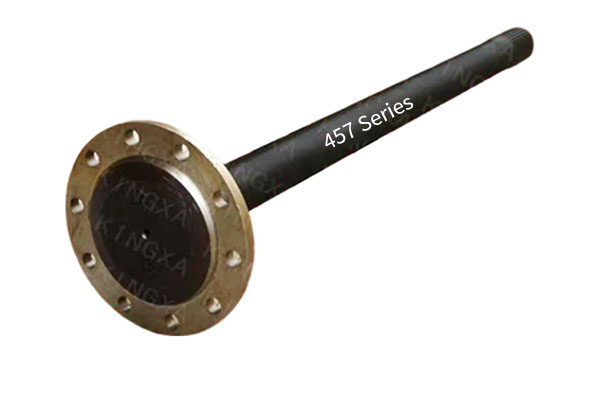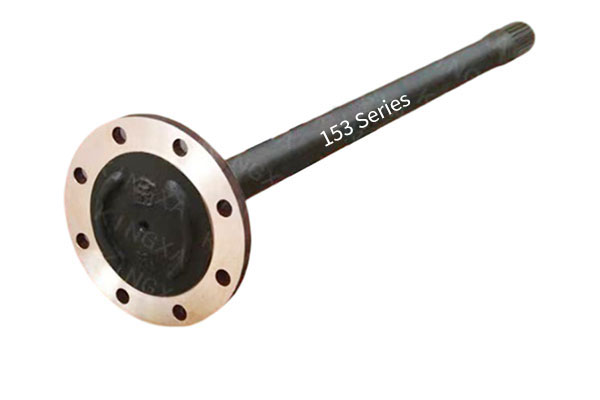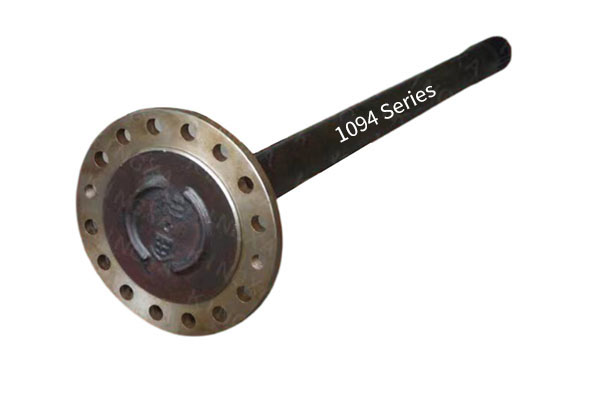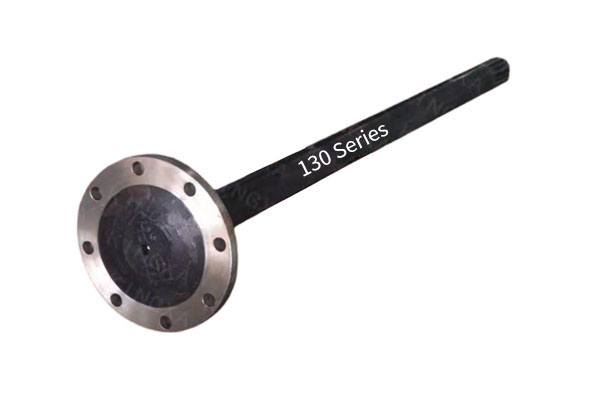The heavy-duty vehicle rear axle half shaft is made of strong material. How can we protect the rear axle components from impact loads?
Release Time : 2025-07-31
The robust material of the heavy-duty vehicle rear axle half shaft acts as a solid barrier for rear axle components, providing crucial protection against impact loads. This robustness isn't simply a matter of sheer hardness, but rather a balance of strength and toughness. This allows it to maintain stability when subjected to sudden external forces while also cleverly dissipating the impact, preventing damage to other rear axle components.
When a vehicle travels over bumpy roads or encounters an obstacle, the ground's impact force is transmitted through the wheels to the heavy-duty vehicle rear axle half shaft. The strong material prevents the half shaft from bending or breaking, acting as a rigid "load support," concentrating the impact load and preventing further spread. This "self-shielding" property reduces the direct impact force on delicate components such as the rear axle reducer and differential, providing a primary line of defense for these core components.
The robust material of the heavy-duty vehicle rear axle half shaft also absorbs the impact through its own deformation. During a sudden impact, the material doesn't resist completely, but instead undergoes slight elastic deformation, absorbing some of the energy like a spring before returning to its original shape. This elastic cushioning effect effectively reduces the peak impact load, smoothing the force transmitted to other rear axle components and preventing gear misalignment or bearing damage caused by intense forces.
The strong material ensures a stable connection between the axle shaft and the rear axle components. Under impact loads, the sturdy axle shaft prevents loosening or displacement due to the force, ensuring precise engagement with the reducer output. This stable connection avoids excessive friction or collision caused by relative motion between components, protects vulnerable parts such as splines and bearings at the connection, and maintains the overall structural integrity of the rear axle.
Under sustained impact loads, the strong material ensures long-term structural stability of the axle shaft, reducing the chain reaction caused by fatigue deformation. Weak axle shafts, however, could gradually bend under repeated impact, altering the force distribution across the rear axle components, leading to increased gear wear or housing cracking. The sturdy axle shaft resists this fatigue damage, maintaining its correct installation position and load-bearing posture, thus preventing secondary damage to rear axle components caused by axle shaft deformation.
When the vehicle brakes suddenly or turns sharply, the resulting impact load is transmitted to the rear axle through the axle shaft. The sturdy material allows the axle shaft to withstand this instantaneous torque shock, preventing fracture due to excessive torque. If the axle shaft breaks, the rear axle components lose their power transmission path and may even be blown off by uncontrolled forces. However, the sturdy axle shaft maintains its position, ensuring the integrity of the power transmission path and indirectly protecting the rear axle components from accidental damage caused by power interruption.
Furthermore, the sturdy material allows the axle shaft to maintain its shape under impact loads while also directing the force transmission. This transfers the majority of the impact load along a predetermined mechanical path to the vehicle frame or suspension system, rather than allowing the force to dissipate uncontrollably within the rear-end components. This organized force transmission ensures that rear axle components only experience forces within their designed range, avoiding localized stress concentrations. This protects components like gears and housings from premature failure due to uneven load distribution, thereby extending the overall service life of the rear axle.
Under complex operating conditions, such as when a heavily loaded vehicle encounters a sudden road depression while climbing a hill, impact loads can multiply exponentially. In these situations, the robust heavy-duty vehicle rear axle half-shaft, leveraging its material advantages, can withstand both the sustained pressure of the heavy load and the explosive force of a sudden impact, providing comprehensive protection for the rear axle components. This "combination of rigidity and flexibility" ensures stable operation of the rear axle system under a variety of challenging conditions, demonstrating the core value of half-shaft material robustness in vehicle safety.







